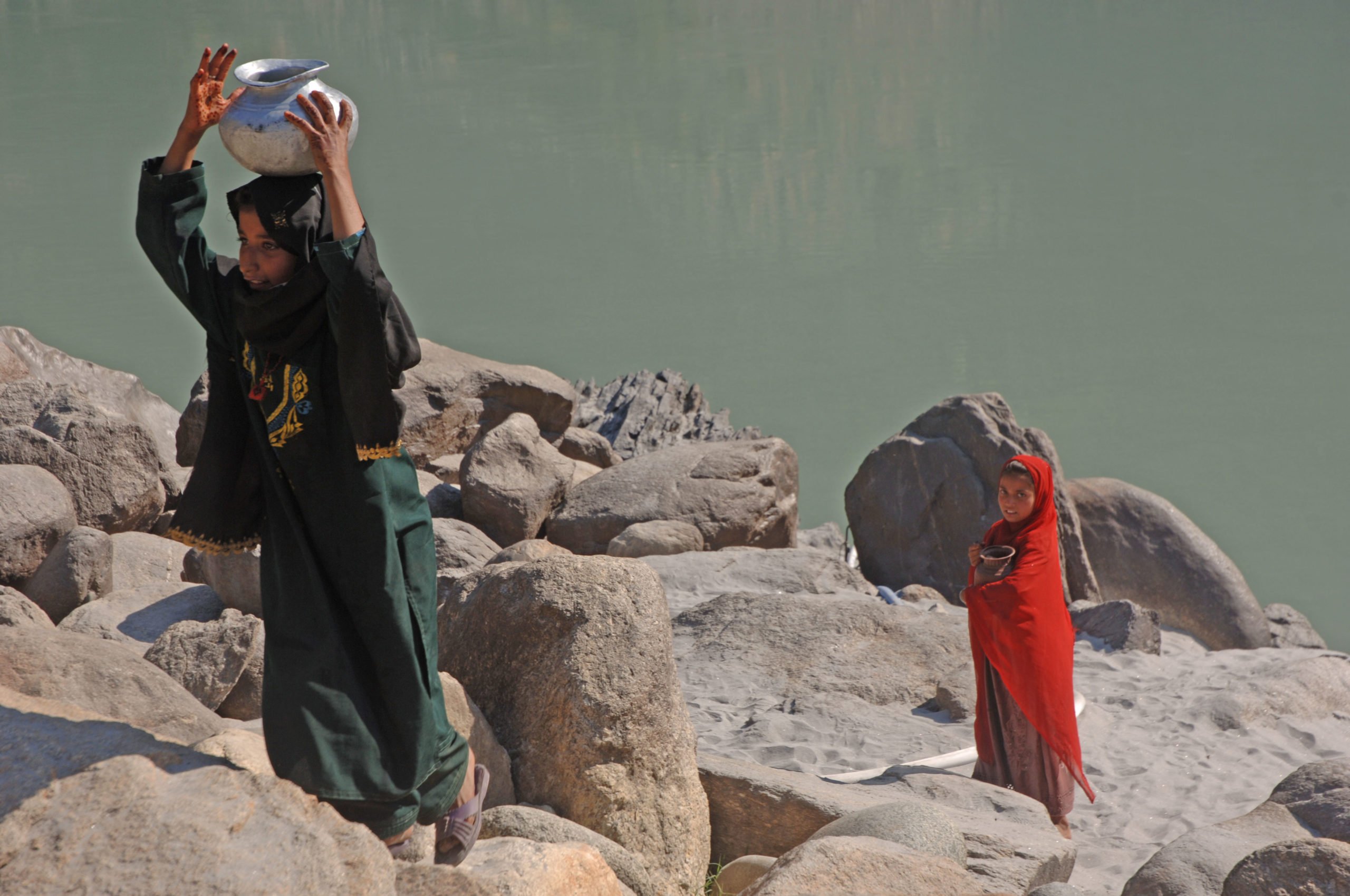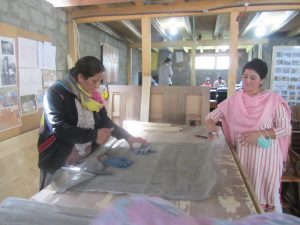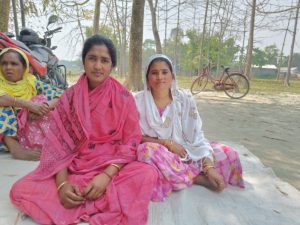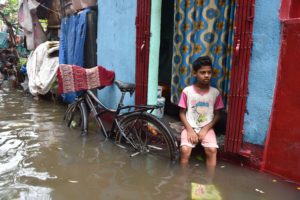Pakistan is the third most water-stressed country in the world and is projected to face absolute water scarcity by 2025, according to reports by the International Monetary Fund, United Nations Development Programme and the Pakistan Council of Research in Water Resources. The issue becomes even more worrisome when dissected through a gender lens. When formulating and implementing policies around water, the impact this has on women is often ignored in the conversation.
Water stress makes women more vulnerable
What is absolute water scarcity?
Absolute water scarcity refers to when water availability is less than the quantity needed for everyday tasks like drinking, bathing and cooking. The standard definition is 500 cubic metres per person a year.
When drinking water is not readily available, it usually falls on the shoulders of women to collect and carry water for long distances for their household. Studies show that 72% of household water has to be carried by women in Pakistan, especially in rural areas, slums and underprivileged makeshift localities.
A facility as basic as a toilet is a luxury for many women in Pakistan, which is linked to the availability of water supply and sewage facilities. Women and girls often have to wait for the cover of darkness to step out to answer the call of nature, which can make them vulnerable to abuse and sexual assault.
When carrying large amounts of water for long distances, women in Pakistan claim that their livelihoods are impacted. This particularly affects young girls: since they are in charge of collecting water, they cannot attend school, and if they do, these responsibilities restrict the time they can devote to their education. In communities that have benefitted from new facilities, especially related to water, school enrolment levels of girls have soared.
The impact of water scarcity on women is often ignored in the conversation on formulating and implementing policies
Even the issues that directly impact men – such as climate-induced male outmigration to find jobs – end up having an impact on women. When the men of a family are forced to move far away, it leaves women with the responsibilities of running the household in water-scarce conditions. The lack of male family members also leaves women more vulnerable to sexual violence by strangers, limiting their freedom of movement.
All of these factors combine to add mental stress to the problems of living in water-scarce conditions. During fieldwork, this phenomenon has been observed particularly in the districts of Tharparkar (Sindh province) and Muzaffargarh (Punjab). Tharparkar has very low average annual rainfall, resulting in droughts, water scarcity and food insecurity. Thari women are known to suffer from mental health issues like depression due to loneliness when their men migrate, literally for greener pastures. Tharparkar’s high suicide rates are worrisome, and this is linked to water scarcity.
To add insult to injury, the disease and time burden associated with lack of access to proper water, sanitation and health (WASH) facilities prevents adolescents and adults from earning a living or fulfilling their full potential. Even if women and girls get into schools and professional spaces, poor access to WASH and privacy for menstrual hygiene management adds to their challenges. Currently, only 22% of women take part in Pakistan’s labour force, where they are often paid less than their male counterparts and given fewer opportunities. According to a publication by UNDP and Development Advocate Pakistan, in 2018-19 women earned just 18% of what men earned. The 2021 Global Gender Index Gap report ranked Pakistan 153rd out of 156 countries. Women’s participation rate in workforce may have almost doubled within 22 years (1992-2014), but this increase is not happening fast enough.
A green economy should be a gender-positive economy
Greening the economy could be an opportunity to advance gender equality and women’s empowerment in sectors with major gender disparities. Targeting the problem of water scarcity through robust and multidimensional policies can be a way forward. Pakistan, in its Nationally Determined Contribution submitted in 2021 to the UNFCCC, committed to transiting to a greener economy, which would prioritise the generation of jobs aimed at restoring and preserving the environment. Such jobs would need to be designed to deal with the structural hurdles that women face in order to achieve Pakistan’s inclusive growth targets, which require women’s participation in the workforce to rise from a current 22% to 45% by 2047.
Given the magnitude of the task of increasing women’s participation in the workforce, there is still a long way to go to achieve greater gender participation in the green economy. With 63% of Pakistan’s population categorised as youths (aged 15–33), there is a need to rapidly take measures to prepare them for the future in the face of a changing climate.
This can be done through capacity training, green skills training and ensuring women are given positions of employment in the water sector. Current and future initiatives need to ensure that extensive research and development is conducted by the Ministry of Climate Change and government departments focused on young people and women. This should be done in collaboration with institutions working on research and higher education, both in the public and private sector, aimed at conserving, improving and extending water services in provinces.
Climate policy must not only create green jobs, such as in the agriculture, tourism and the energy sectors, but also create pathways for women to access these jobs
The challenge of a lagging female green workforce has been observed globally. According to the “Global Green Skills Report 2022” from LinkedIn, “the female green talent has grown since 2015 but still lags behind male”. The major challenge to overcome here is that the climate policy must not only include actions and funding to create green jobs, such as in agriculture, tourism and the energy sector, but it must also acknowledge and create pathways for women to be able to access jobs. Only when this is achieved will there be more equality, and health, social and economic autonomy will be given to women. This will change the relationship they have with water-related risks.
Social change is necessary, and urgent
Green jobs are becoming an increasingly important aspect of transforming societies – as evidenced by the multiple conferences where environmental consultants are present – and are helping formulate policies for more sustainable practices. However, behavioural and social change is still missing.
Pakistan is in the process of finalising a Climate Change Gender Action Plan (CCGAP). The plan intends to apply a gender-inclusive approach to agriculture and food security, water and sanitation, disaster risk management, and energy and transport. This will have an impact on the lives of women.
Additionally, there is the Green Stimulus package in response in the Covid-19 pandemic, where women are employed in plant nurseries or to guard afforested areas; Kamyab Jawan scheme, which gives 25% of loans to female entrepreneurs; and Hunarmand Pakistan Programme, with a 50% female enrolment rate. These are examples of initiatives that are focused on green jobs and mainstreaming gender equality. However, these efforts are underfunded.
Without increasing women’s participation in all spheres, Pakistan cannot curtail the impending water crisis. More education about the problem, ways to mitigate water-related risks, and women’s social and economic empowerment are the only ways forward.





![women farming on chilli farms in Pakistan [image by: Zofeen T. Ebrahim]](https://dialogue.earth/content/uploads/2018/10/IMG_3660-300x225.jpg)



